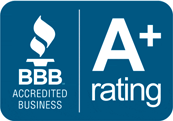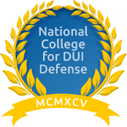- DUI
- Criminal Defense
- Florida DUI
- Traffic Offenses
- Drug Charges
- Marijuana Charges
- Violent Crimes
- Domestic Violence
- Temporary Injunctions
- Weapons Charges
- Theft Crimes
- White Collar Crime
- Juvenile Offenses
- Sex Crimes
- Violation of Probation
- Early Termination of Probation
- Seal or Expunge Criminal Record
- Criminal Appeals
- US Federal Offenses
- Misdemeanor Charges
- Felony Charges
- Co-Defendant Cases
- College Student Defense
- College Student Hearings
- FSU Students
- FAMU Students
- Florida Panhandle Arrests
- Extradition to Florida
- Bench Warrants / Warrants
- Emergency Bond Hearings
- Gambling Charges
- Drone Arrests
- Marsy’s Law
- UAS Infractions
- Introduction of Contraband
- Lying to Police
- Locations
- Case Results
- Our Firm
- Media
- Resources
- Blog
- Contact Us
What are the Window Tint Laws in Florida?
September 21, 2021 Don Pumphrey, Jr. Criminal Defense Social Share
- This blog post is intended purely for informational purposes, the legal team at Pumphrey Law Firm does not assist in window tint cases*
Because of Florida’s scorching temperatures, many people get their windows tinted to keep their vehicle from becoming hot. Others opt for the protective film to be installed for security and privacy reasons, as doing so makes it so others cannot look into their car. Regardless of why you choose to get your windows tinted, it is imperative you know the law and comply with it in order to avoid potential legal repercussions.
Florida, which implemented their tint laws in 1991 and updated them in 2015, is more lenient than other states when it comes to their visible light transmission regulations. Visible light transmission (VLT) is defined as the percentage of light your tint lets through your car window. The higher the VLT, the more light is passing through. Therefore, a 50% tint allows 50% of light to pass through a window. This standard is the basis for tint laws that center on how reflective and dark the tint on certain windows in your car may be.
Statutory Regulations – Passenger vs. Multipurpose Passenger Vehicle
Florida tint regulations are codified in Sections 316.2951 – 316.2957 of the Florida Statutes. Under Section 316.2951, tint is referred to as “sunscreening material”, which means a product or material, including film, glazing, and perforated sunscreening, which, when applied to the windshield or windows of a motor vehicle, reduces the effects of the sun regarding light reflectance or transmittance. Tint regulations differentiate between passenger vehicles and multipurpose vehicles. A passenger vehicle is also called a motor vehicle, which is defined as a self-propelled vehicle not operated upon rails or guideway, but not including any bicycle, electric bicycle, motorized scooter, electric personal assistive mobility device, mobile carrier, personal delivery device, swamp buggy, or moped. A multipurpose passenger vehicle is defined as a motor vehicle with motive power designed to carry 10 persons or fewer which is constructed either on a truck chassis or with special features for occasional off-road operation. In simpler terms, a passenger vehicle is a sedan, while a multipurpose vehicle includes trucks, vans, SUVs, or similar vehicles.
Passenger Vehicles
For passenger vehicles, the front windshield may have a non-reflective tint that is above the manufacturer’s AS-1 line. The AS-1 line refers to the line that extends from the letters AS-1, located on most windshields. This line runs parallel to the top of the windshield and is usually a darker tint. Front seat windows in passenger vehicles are permitted up to 28% tint darkness, meaning that they must allow more than 28% of light in. Back seat windows are permitted up to 15% tint darkness and the rear window is permitted up to a 15% tint darkness.
Multipurpose Passenger Vehicle
Similar to passenger vehicles, the front windshield of a multipurpose passenger vehicle may have a non-reflective tint that is above the manufacturer’s AS-1 line. Front seat windows in multipurpose passenger vehicles are permitted up to 28% tint darkness, again the same as passenger vehicles. However, the difference is in regulations of back seat windows and rear window, which are permitted up to a 6% tint darkness.
Additional Regulations
If you have any tint on your back windows, dual side mirrors are required. In addition, you may not have a colored tint. If you decide to get a tint on your windows, the installer must affix a label on the inside left door jamb of the car which states the trade name of the tinting material and the installer’s or seller’s business name.
Exemptions
Special exemptions allow for a special tint, including medical exemptions. Section 316.29545 of the Florida Statutes states that medical exemption certifications must be issued to individuals with Lupus, any autoimmune disease, or other medical conditions which requires a limited exposure to light that will permit them to have a tint on their windshield, side windows, or back seat and rear windows that would normally violate Florida tint regulations. Furthermore, law enforcement vehicles used in undercover or canine operations are also exempt from the law, as are vehicles that are owned or leased by process servers or private investigators under Section 48.29 of the Florida Statutes, or private investigative agencies licensed under Chapter 493 of the Florida Statutes.
Penalties
Any person who operates either a passenger vehicle or multipurpose passenger on which, after June 20, 1984, the tint was installed in violation of the statute has committed a noncriminal traffic infraction, punishable as a nonmoving violation which carries up to a $500 fine. Any person who sells or installs a tint in violation of Florida law has committed a second-degree misdemeanor, punishable by up to 60 days imprisonment and a $500 fine.
Tallahassee Criminal Defense Attorney
If you have been charged with violating window tint laws, it is imperative you contact an experienced and knowledgeable Tallahassee Criminal Defense Attorney. Don Pumphrey and the members of the legal team at Pumphrey Law Firm have decades of experience defending Floridians against a wide variety of charges and can ensure that your rights will be protected and upheld. Call us today at (850) 681-7777 or send an online message today to discuss your options during an open and free consultation with an attorney in our team.
This article was written by Sarah Kamide










